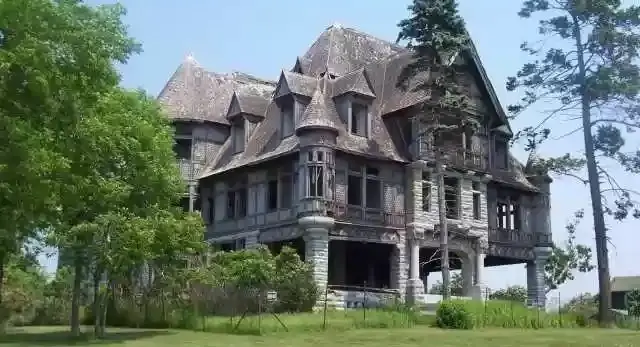Overview of Carleton Villa
- Location: Cape Vincent, New York, USA – specifically at 13618 Carleton Island Lot 1.
- Sale Price: Recently sold for $300,000.
- History: Built in 1894 by architect William Miller for William O. Wyckoff, a key figure in the typewriter industry with the Remington Arms Company.
- Past Use: Initially a luxurious summer residence and social venue in the Thousand Islands region.
- Current Condition: Abandoned for over seventy years and exposed to the elements, the structure requires significant restoration.
Historical Significance and Architectural Details
- Early Tragedy: Tragically, Wyckoff’s wife died of a heart attack just one month before they moved in, and Wyckoff himself died of a heart attack on his first night in the villa.
- Subsequent Ownership: The villa was inherited and later sold by Wyckoff’s son, Clarence, during the Great Depression. General Electric then acquired it to potentially develop the land but eventually abandoned these plans.
- Architectural Changes and Damages:
- Removal of stained glass windows and an entire bedroom floor.
- Stripping of marble from the tower base.
- Demolition halted by World War II, leaving the villa partly dismantled.
The Property Today
- Size and Access: The property spans 6.9 acres with three waterfront access points totaling 815 feet.
- Condition: No utilities are connected, though power and water are accessible on the island. The villa’s stone base remains, but wooden upper structures are decayed.
- Market Presence: Originally listed at $375,000 before selling for $300,000.
Future Plans
- New Owner: Ronald Clapp, a Florida-based real estate investor.
- Restoration Goals: Plans to convert the villa into a bed and breakfast, reviving its historical charm and functionality.
- Community Impact: Expected to boost local tourism and preserve a significant piece of local history.
In summary, Carleton Villa’s transition from a grand estate to an abandoned relic, and now to a potential bed and breakfast, encapsulates a rich narrative of rise, fall, and rebirth. This project not only aims to restore the physical structure but also to rejuvenate its legacy as a historical landmark in the region.












